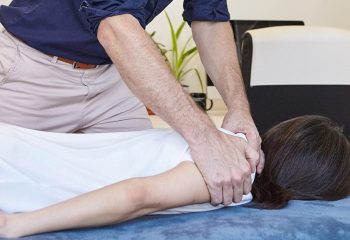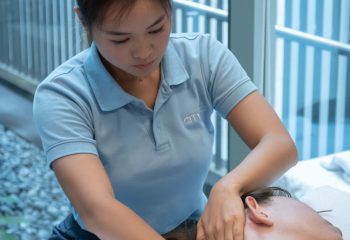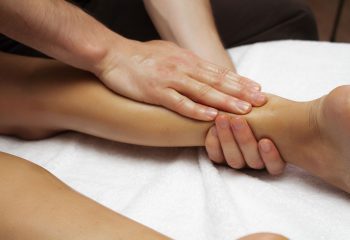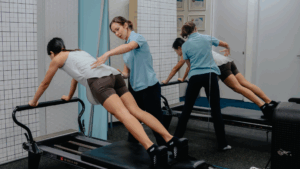Let’s dive into the world of rehabilitation exercises, exploring their incredible benefits and offering insights into key exercises for various conditions. Whether you’re recovering from an injury, aiming to ease pain, reduce injury risks, or improve your mobility, we’ve got you covered.
Why are rehabilitation exercises beneficial?
Rehabilitation exercises serve as a crucial component for individuals embarking on the journey to recovery. Their significance goes beyond mere physical activity; let’s delve into the multifaceted benefits that make them a game-changer in the realm of rehabilitation.
Recovering from sports injuries with rehab exercises
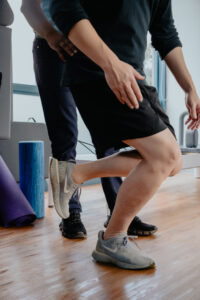
In the dynamic world of sports, injuries are an unfortunate yet inevitable reality. However, the key to a swift comeback lies in the strategic incorporation of targeted rehabilitation exercises. By honing in on specific movements, individuals can accelerate their recovery process, facilitating the restoration of strength and flexibility essential for returning to peak performance.
Easing pain with rehab exercises
Pain, whether chronic or acute, can be a formidable obstacle to everyday life. Tailored exercises, designed with a focus on specific conditions, emerge as a potent remedy in this scenario. Whether grappling with back pain, carpal tunnel syndrome, elbow pain, foot pain, knee pain, neck pain, or shoulder pain, understanding and engaging in targeted exercises become pivotal in alleviating discomfort and fostering a pathway to pain-free living.
Reduce injury risks with rehab exercises
As the age-old saying goes, prevention is indeed the best medicine. Rehabilitation exercises act as a formidable shield against potential future injuries. By proactively engaging in exercises that enhance strength, flexibility, and overall physical resilience, individuals not only recover from existing issues but also significantly reduce the likelihood of encountering new injuries. It’s a holistic approach that promotes enduring well-being.
Improving mobility with rehab exercises
One of the primary goals of rehabilitation is to regain and enhance mobility. This extends beyond the restoration of basic movements; it involves a comprehensive focus on improving flexibility, reinstating the full range of motion, and ultimately boosting overall mobility. The exercises recommended in rehabilitation routines are carefully curated to address these specific aspects, ensuring a more profound and lasting impact on an individual’s physical capabilities.
Remember that your journey to wellness is unique, and we’re here to support you every step of the way. Our team of skilled and compassionate physiotherapists here at City Osteopathy and Physiotherapy is dedicated to helping you achieve your rehabilitation goals. They possess the expertise to guide you through the rehabilitation exercises, tailoring each session to your specific needs. If you’re ready to take the next stride towards a healthier, more active life, book a consultation with our experienced physiotherapists today. Let’s work together to create a rehabilitation plan that suits your individual needs and accelerates your path to optimal well-being.
What are the key rehabilitation exercises for improving flexibility and mobility?
Let’s dive in as we detail a few exercises that can address pains and aches that causes inflexibility and immobility. It is good to note that the following are general exercises. In the case where you feel pain or discomfort from these exercises, we recommend you to head in for a consultation with us here at City Osteopathy and Physiotherapy, where you can receive a better personalised rehabilitation.
Rehabilitation exercise for back pain
Transverse abdominis activation, heel slide
- With bent knees, lie on your back in a neutral position.
- Slide one foot out until your leg is straight.
- Return the foot back to the original position and repeat this action on the other leg.
Extension lunge
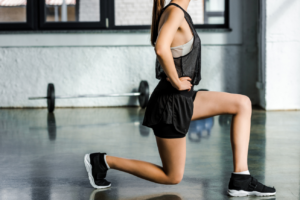
- Begin by standing with your feet in a closed position and bring one foot forward
- Keep the impacted leg firmly on the ground, ensuring the heel remains down.
- Return to the initial stance and repeat
Knee to chest
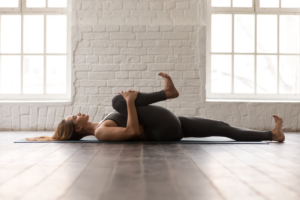
- Lie down on your back, with your knees bent and feet resting flat on the floor.
- Lift one knee toward your chest, using your hands beneath your thigh for assistance.
- Return to the initial position and repeat the movement with the same leg.
Tip: Read our blog for more “Physiotherapy exercises for lower back pain”!
Rehabilitation exercise for Carpal tunnel syndrome
Wrist bend

- Place your elbow on a table with your arm pointing upward and your wrist in a straight position.
- Slowly bend your wrist forward to form a right angle and maintain the position for 5 seconds.
- Straighten your wrist.
- Gently bend your wrist backward and hold for 5 seconds.
- Repeat this sequence for 3 sets of 10 repetitions.
Wrist lift
- Rest your palm on the table and raise your fingers.
- Position your second hand perpendicular to the knuckles and apply downward pressure, while the hand on the table resists by trying to lift up.
- Notice the contraction in the muscles of your forearms.
- Switch hands and perform the same action again.
Finger bend
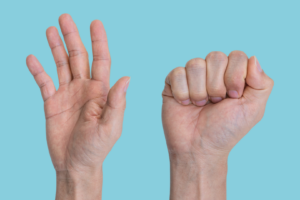
- Begin by extending your fingers outward.
- Carefully flex the middle joints of your fingers towards the upper palm, maintaining the position for 5 seconds.
- Repeat this action for 3 sets, with each set consisting of 10 repetitions.
Rehabilitation exercise for elbow pain
Wrist extensors stretching
- Straighten one arm in front of you.
- Use your opposite hand to hold it near the thumb side and gently lower the wrist.
- Rotate the wrist towards the pinky finger to enhance the stretching sensation.
Stretching wrist flexors
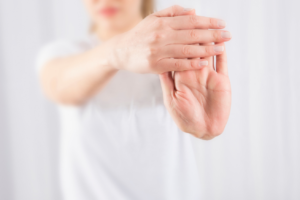
- Grasp the palm of one hand using the other hand, ensuring the affected arm remains straight at the elbow.
- Slowly draw your hand backward with a gentle motion to sense a stretching sensation in the forearm.
Wrist extension
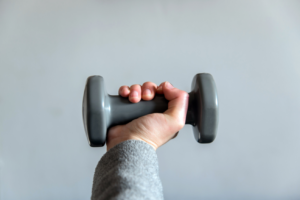
- Position your forearm on an armrest or table, allowing your wrist to hang over the edge and your palm to face downward.
- Hold a weight in your hand and raise it towards the ceiling.
- Lower the weight in a controlled manner and repeat the movement.
Rehabilitation exercise for foot pain
Stretching calf sitting
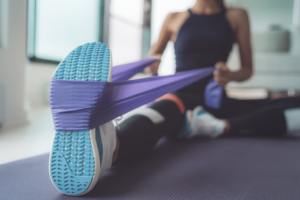
- Begin by sitting with one leg extended and the other leg bent.
- Secure a strap around the ball of your extended foot, grasping the strap’s ends with your hands.
- Gently tug on the strap, gradually increasing tension until you sense a stretch in the rear of your leg.
- Hold the stretched position.
- Repeat the same sequence with your opposite leg.
Calf stretch with leg swing
- Stand leaning forward with your hands resting on a table or wall, ensuring the back heel stays on the ground and the toes are pointed inward. Experience a gentle stretch in the calf of the rear leg.
- While maintaining this stance, swing the front leg from side to side.
- Ensure the back leg remains straight, and keep your spine upright throughout the movement.
Plantar fascia release
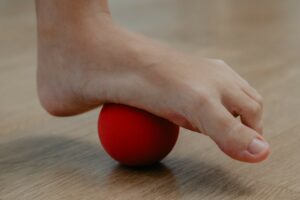
- Begin by sitting on a chair with a straight back, placing one foot on a tennis ball and keeping the other foot flat on the floor. Ensure your back is in a neutral position with a slight arch.
- Roll the tennis ball beneath the arch of your foot, moving from the heel towards the toes.
Pelvic floor rehabilitation exercises
Bridging
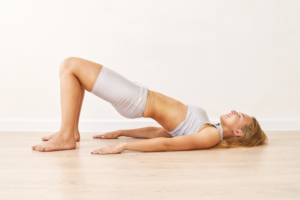
- Engage the core while strengthening the pelvic region.
- Lie on your back with your knees bent and feet flat on the floor. Keep your arms at your sides.
- Lift your hips toward the ceiling, forming a straight line from your shoulders to your knees.
- Hold the bridge position for a few seconds, then lower your hips back to the starting position.
- Aim for 10-15 repetitions, gradually increasing as you build strength.
Leg raises
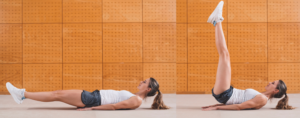
- Lie on your back with your legs straight and arms by your sides
- Slowly lift your legs off the ground, keeping them straight. Stop when your legs are perpendicular to the floor.
- Slowly lower your legs back down, hovering just above the floor without touching it.
- Aim for 10-15 repetitions, increasing gradually.
Tip: Looking for postpartum exercises that address pelvic girdle pains? Read more here. Or explore “pelvic floor therapy for pelvic pain relief”!
Rehabilitation exercise for knee pain
Hamstring stretch
- Position yourself at the edge of a table or use a chair with your feet dangling or resting on the floor, maintaining a neutral back posture.
- Place your hands on your lower back and extend one leg without allowing your lower back to slump.
- If you can fully extend the leg without discomfort, gently pull your toes towards you until you sense a mild stretch.
- Maintain the stretch for the recommended duration, revert to the starting position, and then repeat the process with the opposite leg.
- Ensure that your back maintains a slight arch throughout the entire exercise.
Isometric straight leg hold
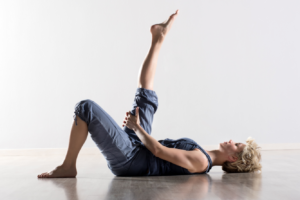
- Raise one leg while lying on your back, keeping the knee straight, and lift the heel about 10-15 cm off the ground.
- Maintain proper form by not arching your lower back during the lift.
Sit to stand
- Sit securely on a chair positioned against a wall to ensure stability. Place your feet apart, ensuring your heels stay grounded.
- Hinge forward at the hips with your chest lifted. Gradually push through your heels as you initiate the motion to stand up.
- Extend your hips backward as you smoothly lower yourself back down to a seated position on the chair. Maintain your weight over both heels throughout the movement.
Neck pain
Cervical nod, neutral
- Sit on a chair.
- Lift your chest slightly and pull your shoulder blades back to achieve proper posture.
- Gently lower your chin towards your chest, focusing solely on moving your head without involving your neck.
- Maintain this position for the suggested duration before releasing and returning your head to its initial position.
Side bending
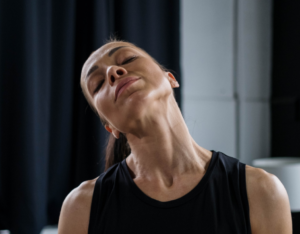
- While sitting or standing, tilt your head to the right as much as you can, aiming to bring your ear close to your shoulder without raising the shoulder.
- Adjust the degree of chin retraction (drawing in your chin) to centre the discomfort.
- Repeat on sequence on the left
Shoulder pain
Assisted shoulder flexion
- Position yourself facing a wall and place your hand from the affected arm against it.
- Use your fingers to ascend the wall as far as your reach allows, then return to the initial position.
- Repeat this movement.
Side lying external rotation
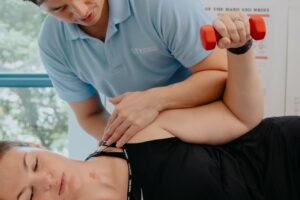
- While lying on your side, hold a weight in your upper hand with the elbow bent at a 90-degree angle.
- Insert a rolled towel between your arm and your side.
- Use your free arm as a support for your head.
- Lift the weight upward by externally rotating your arm.
- Maintain stability in your body; avoid turning your trunk to aid the motion.
How can targeted exercises aid in the recovery process after an injury?
When an injury occurs, the body’s natural response is to heal. However, the recovery process is often intricate and requires a strategic approach. Targeted exercises are specifically designed to address the affected areas, promoting healing, restoring function, and preventing further complications.
- Muscle activation and strengthening: Targeted exercises engage specific muscle groups, promoting activation and strengthening. This not only aids in the recovery of injured tissues but also prevents muscle atrophy, a common concern during periods of reduced activity.
- Joint stability and mobility: Injuries can compromise joint stability and limit mobility. Targeted exercises work to enhance the stability of affected joints, gradually restoring a full range of motion. This is particularly crucial in the rehabilitation of joint-related injuries such as sprains and dislocations.
- Improved circulation and healing: Physical activity, when targeted and controlled, stimulates blood flow to injured areas. Increased circulation delivers essential nutrients and oxygen, expediting the healing process. Additionally, improved circulation helps reduce inflammation, a key factor in many types of injuries.
Specific rehabilitation exercises for common sports-related injuries
Sports-related injuries are a ubiquitous part of the athletic experience, affecting individuals across various levels of fitness and skill. Whether you’re an avid sports enthusiast or a professional athlete, navigating the road to recovery after an injury is a crucial aspect of maintaining peak physical performance. In this section, we’ll delve into specific rehabilitation exercises designed to address common sports-related injuries, ranging from minor sprains and strains to more severe conditions.
Targeted rehabilitation strategies for sprains and strains
1. Ankle sprains:
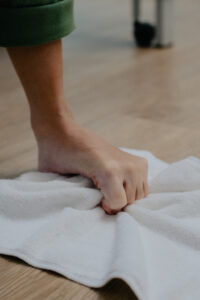
Exercise: Alphabet exercises
Ankle sprains are prevalent in sports that involve quick changes in direction. Alphabet exercises involve tracing letters of the alphabet with your toes, promoting range of motion and flexibility in the ankle joint.
2. Hamstring strains:
Exercise: Eccentric hamstring curls
Eccentric hamstring curls focus on the controlled lengthening of the hamstring muscles. This aids in strengthening the hamstrings and reducing the risk of future strains.
3. Rotator cuff injuries:
Exercise: External rotation exercises
Rotator cuff injuries, common in sports with repetitive arm movements, benefit from external rotation exercises. These exercises strengthen the muscles surrounding the shoulder joint.
Tailored approaches for recovery of severe injuries
1. ACL tears:

Exercise: Quadriceps-strengthening lunges
Anterior Cruciate Ligament (ACL) tears often require surgical intervention. Quadriceps-strengthening lunges help rebuild strength in the quadriceps, providing stability to the knee joint.
Tip: Read our blog to find out more about “ACL reconstruction physiotherapy”!
Exercise: Eccentric wrist flexor exercises
Overuse injuries like tennis or golfer’s elbow can be addressed with eccentric wrist flexor exercises. These exercises focus on controlled lengthening of the wrist flexor muscles.
3. Stress fractures:
Exercise: Non-impact cardiovascular activities
Stress fractures, common in high-impact sports, require a non-weight-bearing approach. Engaging in non-impact cardiovascular activities such as swimming or cycling can maintain cardiovascular fitness without exacerbating the injury.
Rehabilitation principles for sports-related injuries
1. Individualised approach:
Every athlete is unique, and injuries vary. Tailor your rehabilitation plan to your specific injury, taking into account your fitness level, age, and overall health.
2. Gradual progression:
Rehabilitation is a gradual process. Progressing too quickly can lead to setbacks. Follow a structured plan that gradually increases intensity and complexity.
3. Cross-training:
Engage in cross-training to maintain overall fitness while allowing the injured area to heal. This can involve activities that don’t exacerbate the injury.
4. Professional guidance:
Consult with a healthcare professional or a physiotherapist for personalised advice. They can provide insights into your specific condition and guide you through the rehabilitation process.
Navigating the path to wellness through rehabilitation exercises
Rehabilitation exercises are not just a series of movements; they are a transformative tool on your journey to recovery. Dive into our comprehensive guide, and empower yourself with the knowledge and exercises needed to bounce back stronger than ever. Are you ready to take the next stride towards a healthier, more active life? Book a consultation with our experienced physiotherapists today. Your comeback story starts here – don’t wait, take the first step towards a stronger, healthier you!
FAQs
What are the benefits of incorporating balance exercises into your rehabilitation plan?
Maintaining balance is crucial for injury prevention. As you engage in specific exercises targeting your balance, you enhance proprioception – your body’s awareness of its position in space. This heightened awareness is instrumental in preventing trips, slips, and falls, which can be particularly detrimental during the rehabilitation phase.
Moreover, balance exercises contribute significantly to overall stability. When you strengthen the muscles involved in balance, you create a solid foundation for other rehabilitation exercises. This enhanced stability not only aids in preventing injuries but also allows you to perform more complex movements with confidence.
Additionally, incorporating balance exercises challenges various muscle groups simultaneously. This holistic approach ensures that your rehabilitation plan addresses the overall functionality of your body. Strengthening core muscles, improving joint stability, and enhancing coordination are all interconnected benefits that stem from incorporating balance exercises into your routine.
How do proper form and technique impact the success of rehabilitation exercises?
Maintaining proper form during rehabilitation exercises is essential for several reasons. Firstly, it ensures that you are targeting the intended muscle groups effectively. Misalignment or incorrect posture can lead to the overuse of certain muscles, potentially causing strain or injury. By adhering to proper form, you optimise the benefits of each exercise while minimising the risk of complications.
Secondly, correct technique promotes joint health. Rehabilitation often involves movements that target specific joints, and executing these movements with the right technique helps in distributing the load evenly. This, in turn, prevents undue stress on joints and minimises the likelihood of exacerbating existing issues.
What role does consistency play in achieving long-term results with rehabilitation exercises?
Rehabilitation is a gradual process that requires persistent dedication. Consistent engagement with your prescribed exercises ensures that your body gradually adapts to the demands placed upon it. Muscles strengthen, flexibility improves, and the overall function of your body undergoes positive transformations with each session.
Moreover, consistency is crucial for habit formation. As you integrate rehabilitation exercises into your routine, they become ingrained behaviours rather than isolated tasks. This habitual engagement is what ultimately leads to the long-term maintenance of the gains achieved during rehabilitation.


